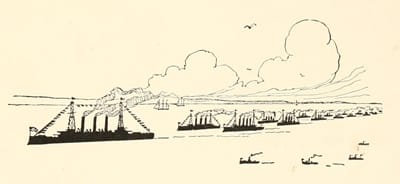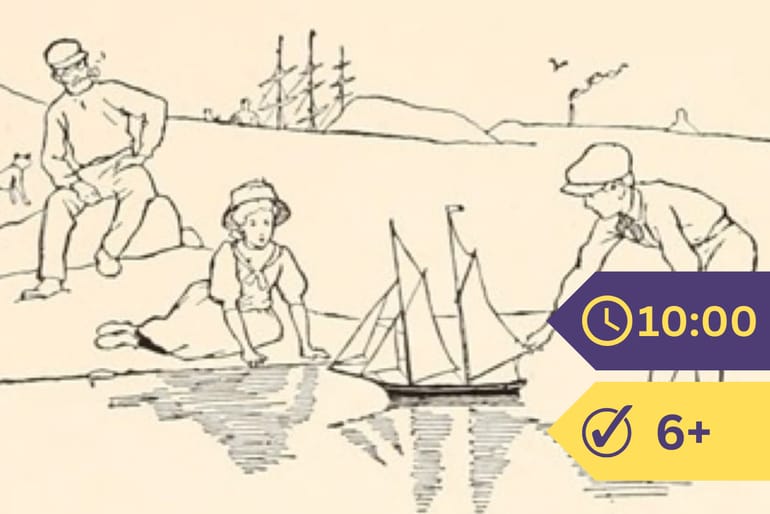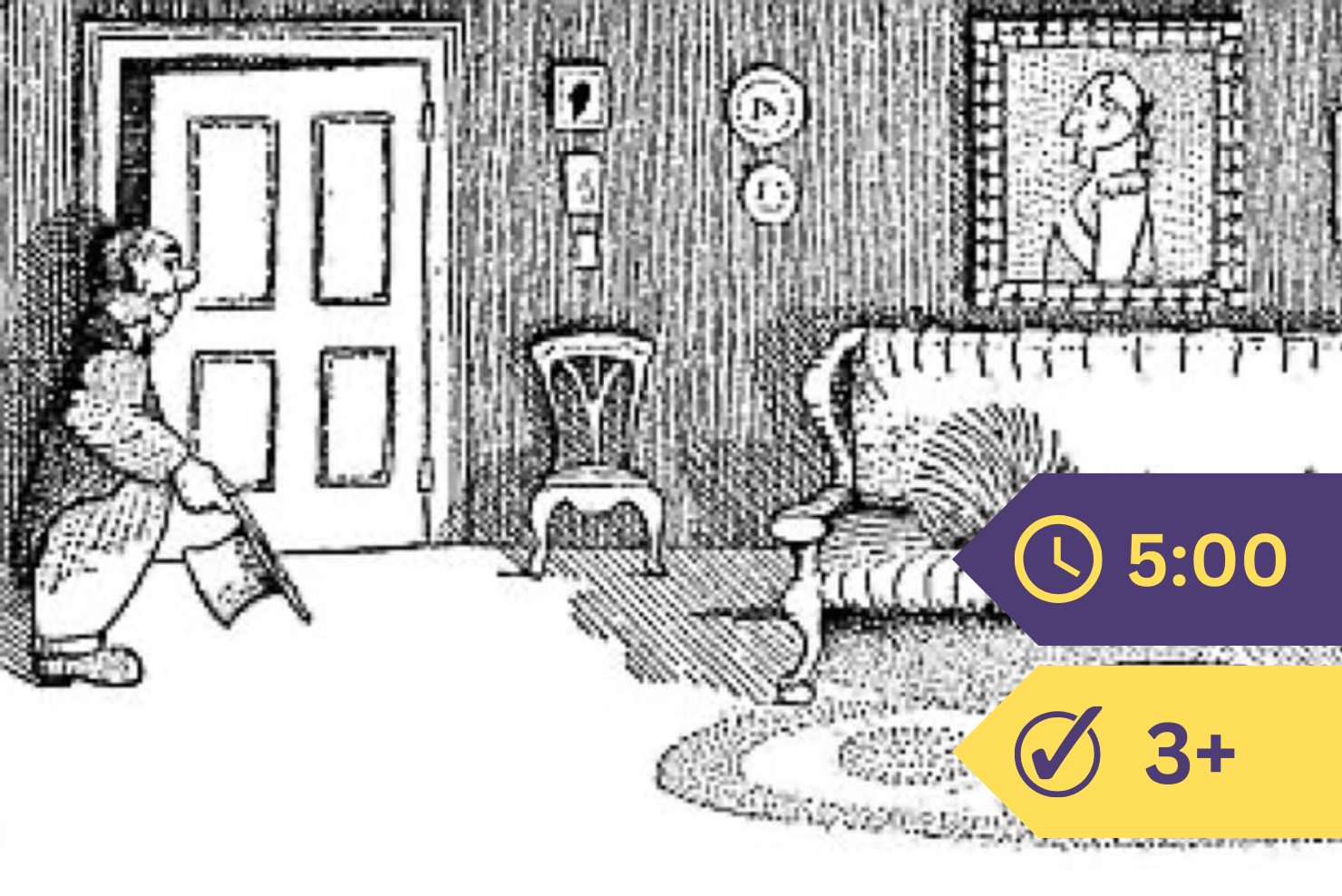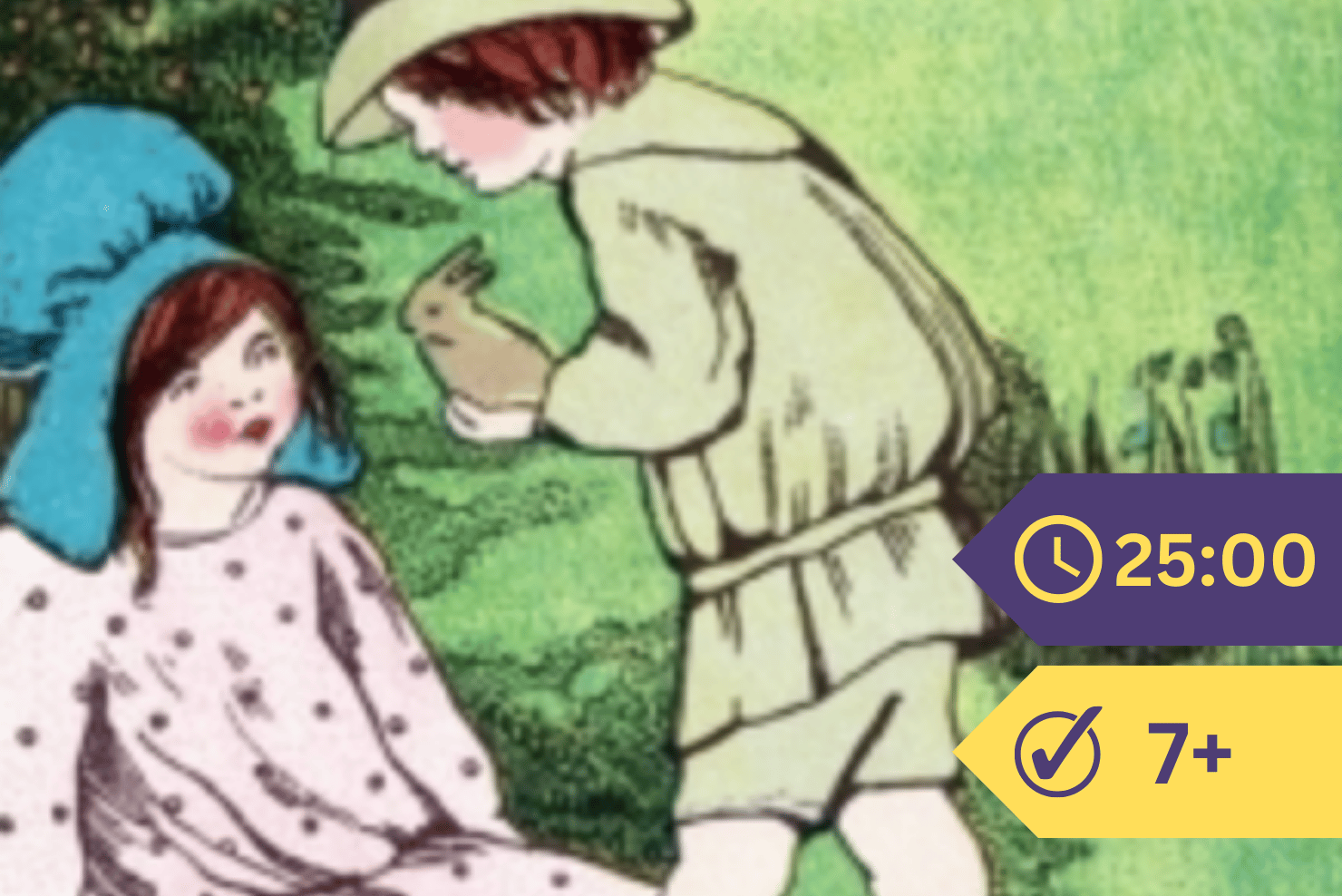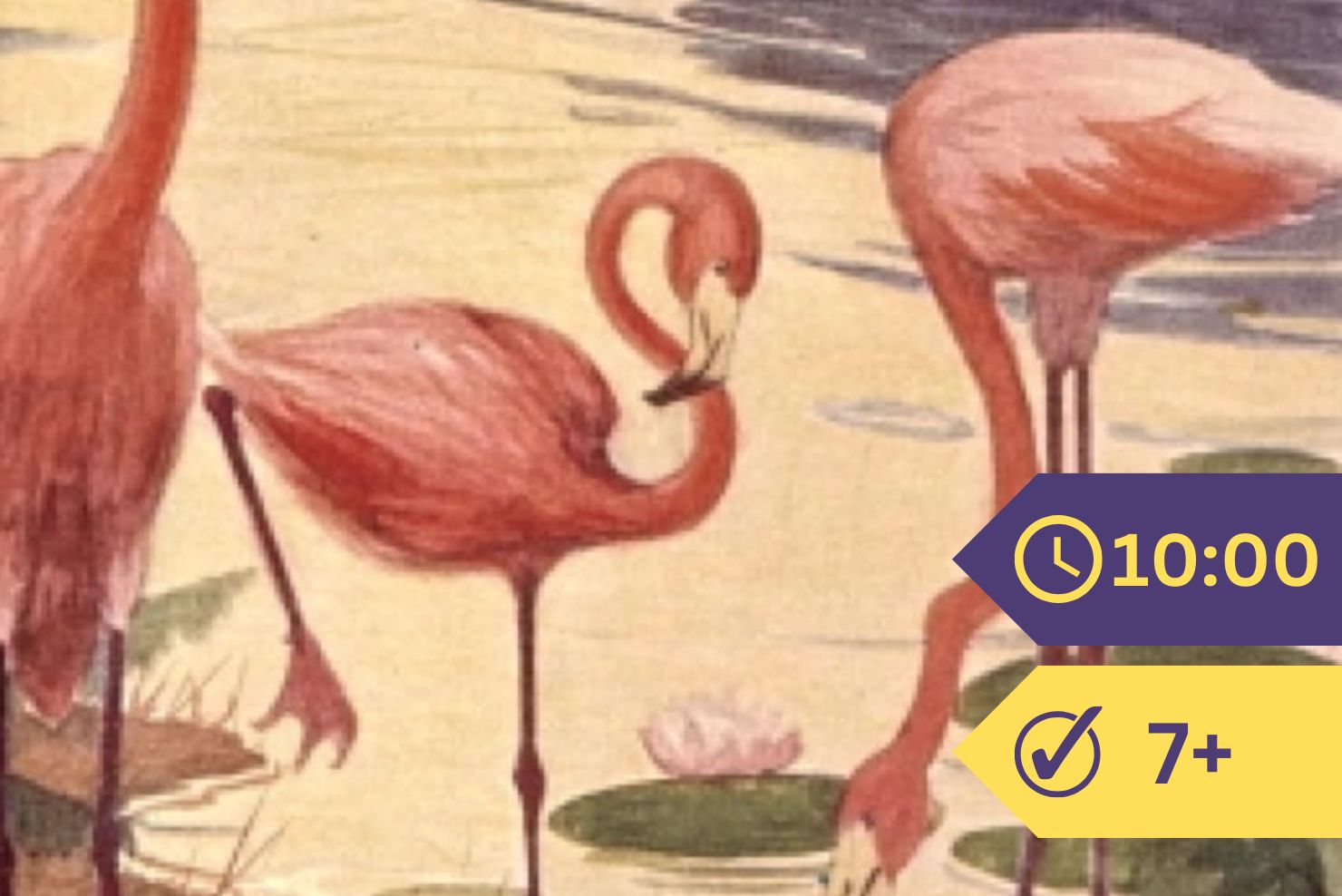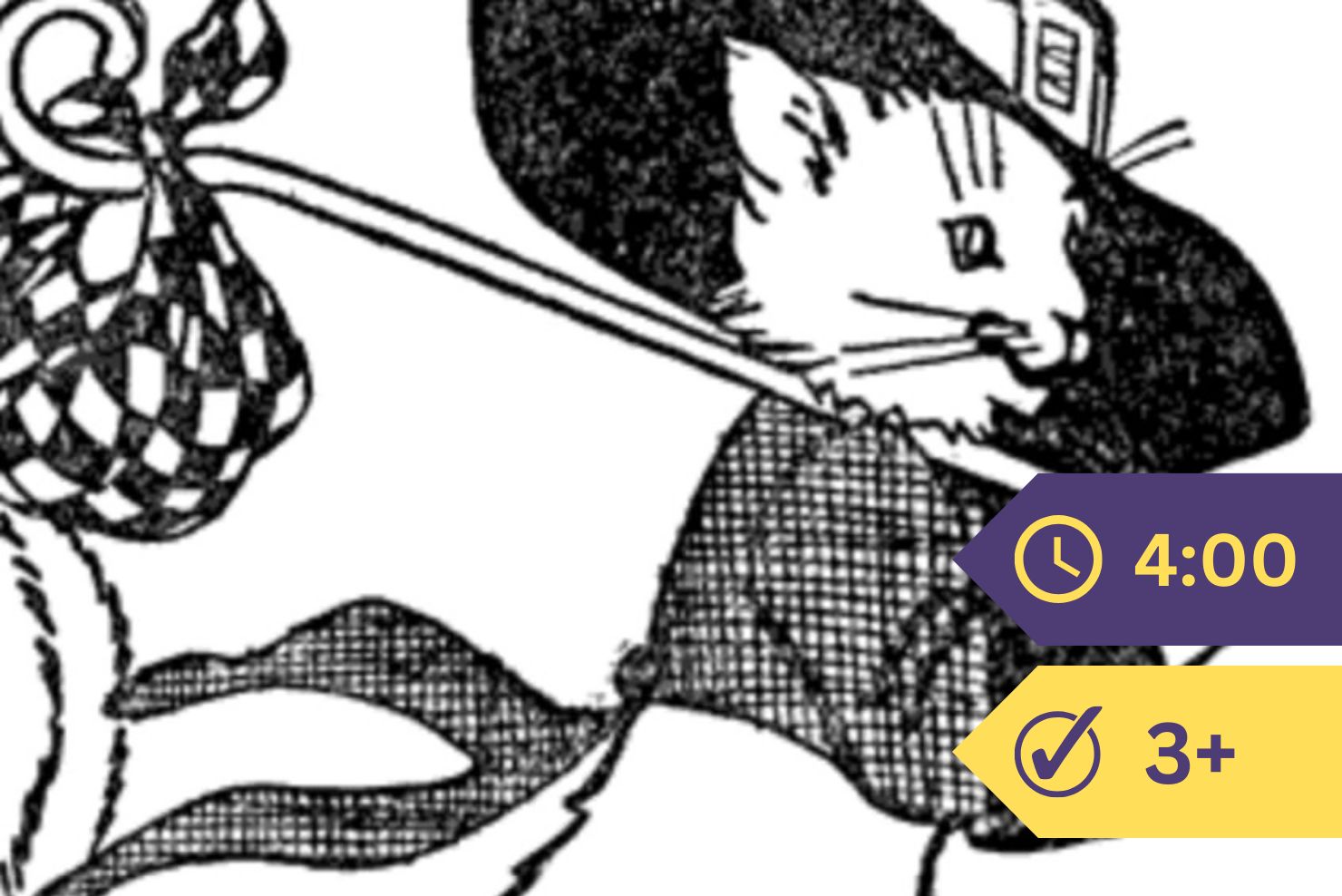Captain Hawes made a small toy sailboat for the children to sail in the bays along the beach. He showed them how to fasten the sails and set the rudder so the boat would “tack” and sail against the wind. He called it “sailing close to the wind.”
Around that time, they heard that the new ship, fully rigged and with all its sails in place, had been taken to the neighboring harbor to collect its cargo and begin a long journey. The children wanted to see the ship again, so Captain Hawes took them on a small trip to the harbor where they could see all the preparatory work.
Loading a ship is always a strenuous and hurried affair, with a lot of hustle and bustle, shouting, dragging, and pushing of goods. The children, led by Patsey, found a good vantage point and watched in wonder as they sat on a few boxes, observing all the activity.
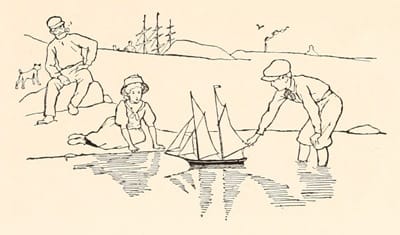
Busy dockworkers hurried to roll barrels up the gangway and carry bags inside, neatly storing them on the deck. Bales and boxes were hoisted over the railing and lowered into the hold through the hatches. The steam engine hummed, the helmsman shouted orders, and for the children, everything seemed like a jumble. But in reality, it was not a jumble, and everyone knew exactly what they were doing, and the work progressed quickly.
Bob and Betty were amazed at the large amount of goods that were being loaded onto the ship. They had never seen so many boxes, barrels, bales, and sacks. And yet, this was just the beginning, as Captain Hawes told them that even at this rapid pace, it would take many more days to load the ship.
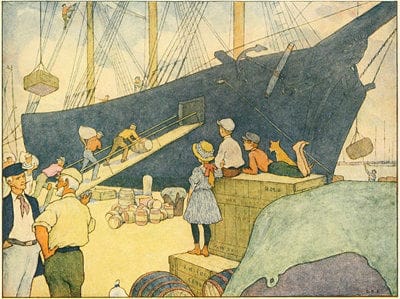
When the first part of the cargo was loaded, the ship sat high in the water, but when everything was on board, the ship would sit deeper in the water. This was planned before it was built, Captain Hawes explained. The ship’s designer knew exactly how it should sit in the water when it was loaded, so there would be no surprises!
The ship would be heading east. Captain Hawes had been there many times, far away in the Chinese seas, where there were strange vessels on the water, such as junks with their strange, high sails, and sailors with braids on their backs. Everything was so different from our part of the world.
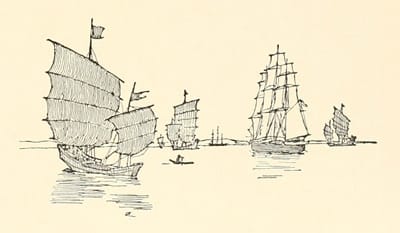
In the evenings, while Captain Hawes smoked his pipe, he told the children about distant lands he had visited on his travels and suggested they look up these places on a world map. For Bob and Betty, this was new, and they found it very enjoyable and interesting. China and Greenland now meant so much more than just a few names.
He talked about Iceland and Greenland and how in those regions, where almost everything was covered with snow and ice, certain animals lived that could not be found anywhere else, such as the large white polar bear and the walrus.
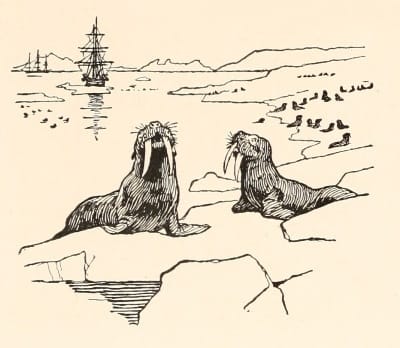
“Well, we know a polar bear,” Betty interrupted the captain. The polar bear was an old friend of theirs. They had often seen it in Central Park.
“Well, that’s very good,” said the captain. “Now you know where it comes from too. I’ve been in that direction during my travels.”
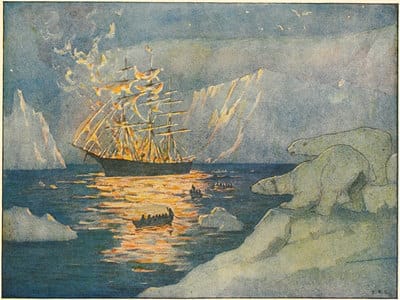
Often whale hunters in those areas actually chased away the whale. They were dangerous seas to work in, as there were many icebergs and the risk of fog around the icebergs was great. It was very dangerous to sail then.”
But, the Captain said, what sailors feared the most was fire at sea. It happened rarely, but when it did, it was always serious. Once, the Captain’s ship was burned between the icebergs at night. There was nothing left to do but to take the rowboats and flee to the coast, which luckily was nearby. They lost everything except the clothes they were wearing and a small amount of provisions. And there, as they watched, the ship was engulfed in a high blaze, and that was the last they saw of the ship. The Captain said they felt pretty cold and lonely there, far away from the rest of the world, with no other way to get away than in the small rowboats.
Fortunately, they quickly reached an Inuit village. The Inuit are the natives who have always lived there. They are small people, all dressed in heavy, warm furs, who build snow houses in which they stay warm even in the coldest weather. They live off hunting and fishing. They throw spears at seals from their canoes and fish through holes in the ice. These are the people about whom you hear explorers talking when they go on expeditions to the North Pole. Captain Hawes said that fortunately, whale hunters often roamed these regions, so the Captain and his mates were picked up by a passing ship and taken home fairly quickly.
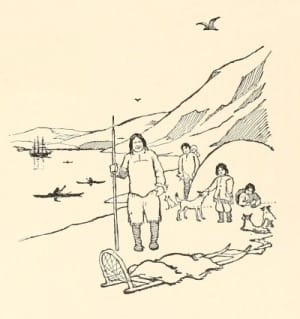
The summer now went by quickly, and the children’s summer vacation would soon be over too. Before they had to leave for home, the Sachem – that was the name of the new ship – was ready to sail the seas. The children had admired her “figurehead” extensively. The figurehead was a beautifully carved wooden Indian chief, gilded and painted in bright colors. The ship had her entire cargo on board, the hatches were closed, and everything was packed and secured and ready for the long journey.
The ship would set sail for the Far East, the Captain said. First, she would visit some South American ports, then cross the ocean to Africa, then stop in Cape Town and other less important ports, then sail around the Cape and go to India via the Indian Ocean. Then she would continue to China and Japan.
With the goods on board, trade would be conducted in the various ports. Trading means selling the goods or exchanging them for things made or grown in distant lands. They would then take these things back home to sell in our markets. This was the way, Captain Hawes explained, that we get many good things that we cannot grow or make in our own country.
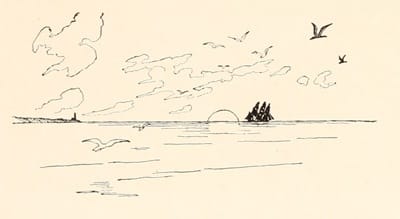
On the day the ship left, everyone wished her a safe journey. With all sails hoisted, the ship looked beautiful. A soft land breeze filled her sails, and slowly and gracefully she sailed away, headed for the open sea. The steamboats and tugboats in the bay blew a greeting to the ship with their whistles.
Captain Hawes told the children, with a deep sigh, that this was probably the last square-rigged ship they would see leaving this harbor, as this type of old-fashioned ship with these kind of sails would now hardly be made anymore. A new type of ship, with sails at the front and back, was more practical and was now being used more and more. But even these types of ships could not compete with steamboats. Nowadays, steamboats and cargo ships transported almost all goods.
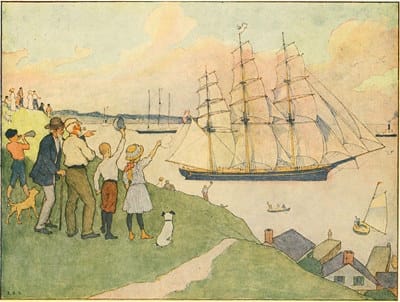
They watched the ship until it was far away. The sun set and the only thing they could still see of the ship was a small black dot on the horizon.
And now it was time for Bob and Betty to go home, as their summer vacation had come to an end. Back home, they were just in time to see the country’s war fleet. This was the latest development in the field of navigation. They were large, massive steel ships without sails, powered by steam. They were enormously impressive, but just wait until you hear Bob and Betty tell about their summer with Captain Hawes, then you’ll learn everything about sailing ships.
